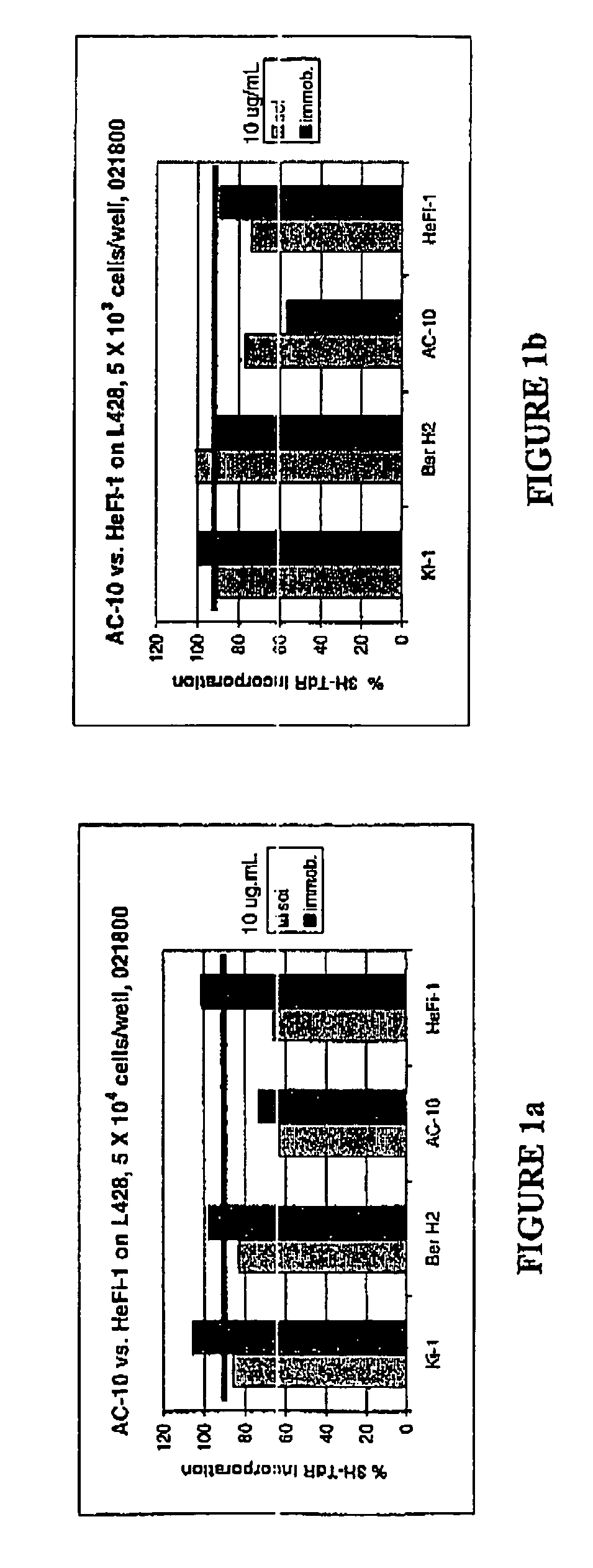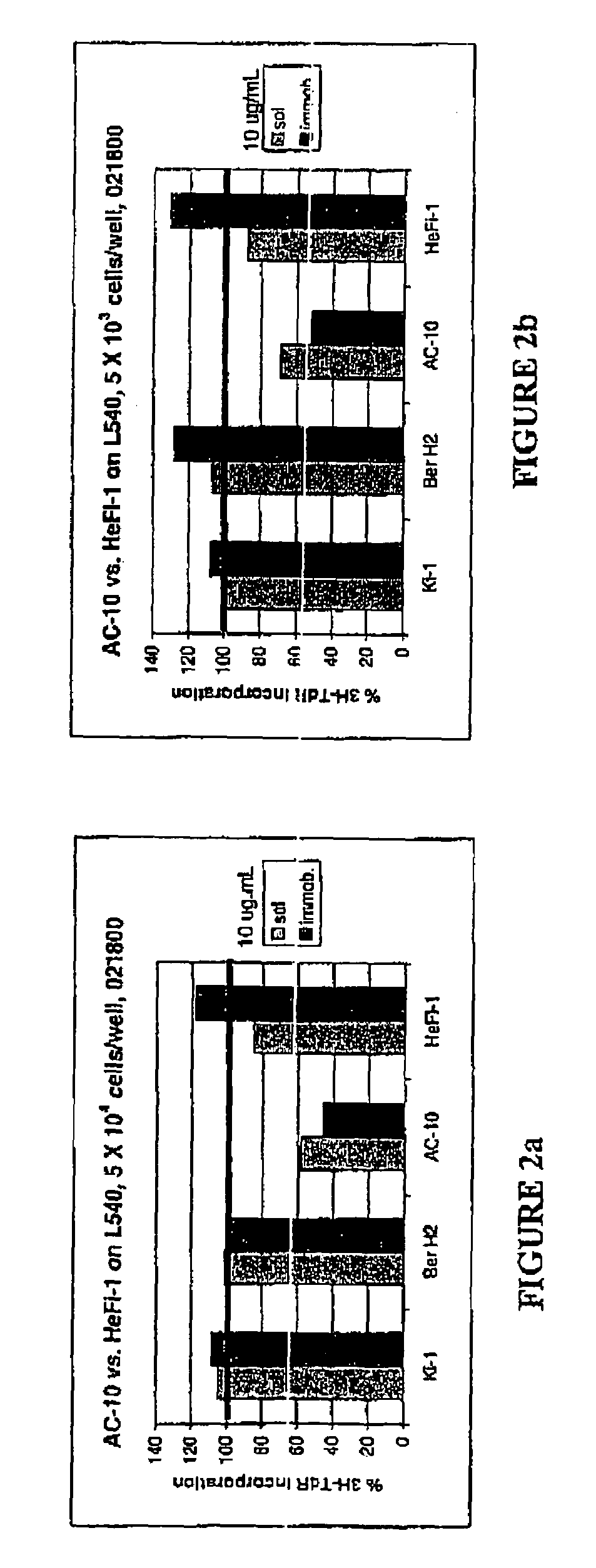Recombinant anti-CD30 antibodies and uses thereof
a technology of anti-cd30 and cd30, which is applied in the field of recombinant anti-cd30 antibodies, can solve the problems of unmodified mabs, limited the ability to deliver curative doses of these agents, and no patient experienced tumor regression, and achieve the effect of reducing the incorporation of 3h-thymidin
- Summary
- Abstract
- Description
- Claims
- Application Information
AI Technical Summary
Benefits of technology
Problems solved by technology
Method used
Image
Examples
Embodiment Construction
[0035]The present invention relates to proteins that bind to CD30 and exert a cytostatic or cytotoxic effect on HD cells. The invention further relates to proteins that compete with AC10 or HeFi-1 for binding to CD30 and exert a cytostatic or cytotoxic effect on HD cells. In one embodiment, the protein is an antibody. In a preferred mode of the embodiment, the antibody is AC10 or HeFi-1, most preferably a humanized or chimeric AC10 or HeFi-1.
[0036]The invention further relates to proteins encoded by and nucleotide sequences of AC10 and HeFi-1 genes. The invention further relates to fragments and other derivatives and analogs of such AC10 and HeFi-1 proteins. Nucleic acids encoding such fragments or derivatives are also within the scope of the invention. Production of the foregoing proteins, e.g., by recombinant methods, is provided.
[0037]The invention also relates to AC10 and HeFi-1 proteins and derivatives including fusion / chimeric proteins which are functionally active, i.e., whic...
PUM
| Property | Measurement | Unit |
|---|---|---|
| area | aaaaa | aaaaa |
| pH | aaaaa | aaaaa |
| pH | aaaaa | aaaaa |
Abstract
Description
Claims
Application Information
 Login to View More
Login to View More - R&D
- Intellectual Property
- Life Sciences
- Materials
- Tech Scout
- Unparalleled Data Quality
- Higher Quality Content
- 60% Fewer Hallucinations
Browse by: Latest US Patents, China's latest patents, Technical Efficacy Thesaurus, Application Domain, Technology Topic, Popular Technical Reports.
© 2025 PatSnap. All rights reserved.Legal|Privacy policy|Modern Slavery Act Transparency Statement|Sitemap|About US| Contact US: help@patsnap.com



